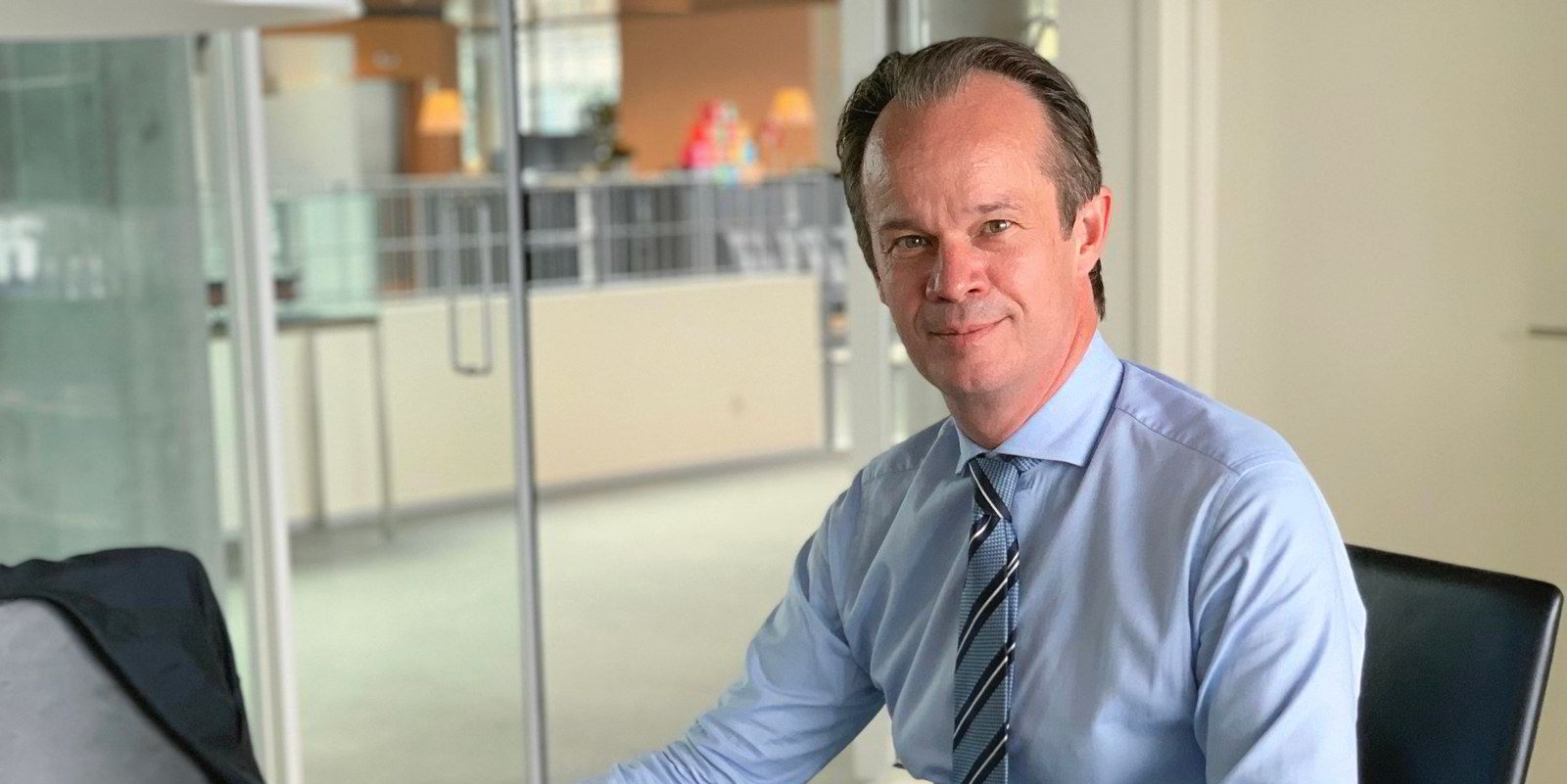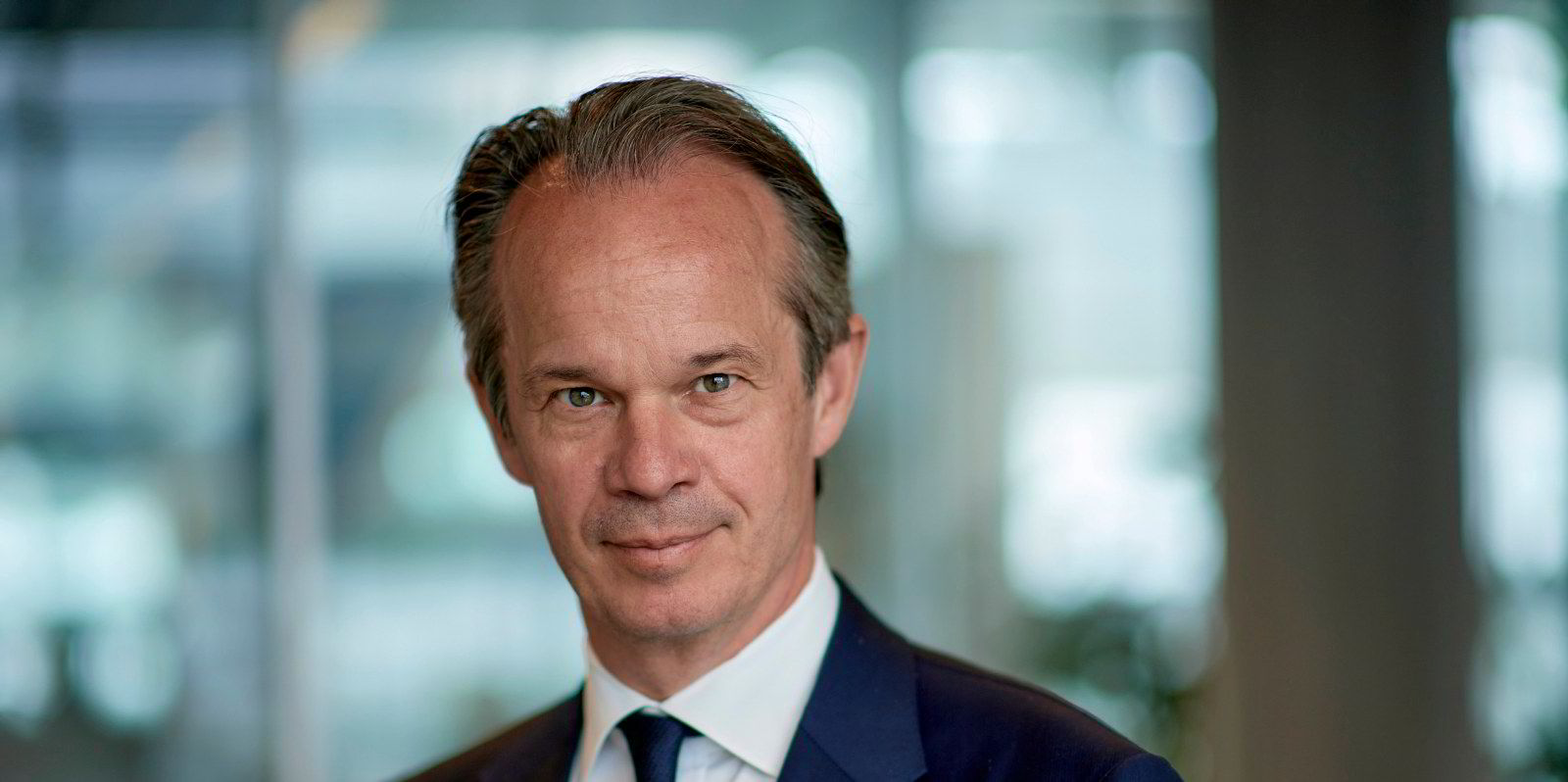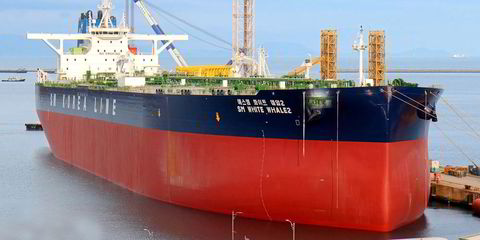Torm chief executive Jacob Meldgaard is ruling out newbuildings as too risky for now.
The Danish product tanker company’s boss told TradeWinds he does not see orders as a “possibility” currently.
“For our company, we don’t see that as the way forward. I mean, I don’t think the world needs more capacity,” Meldgaard said.
“Let’s say that you contemplate constructing new capacity into our sector. I do believe that there will be tectonic plates that will change the dynamics for refined oil products over the coming 25 years,” the CEO added.
With the lifetime of a tanker being 25 years, Meldgaard believes that would mean making “quite a significant bet” that the world stays the same.
He argues this is never the case.
“So personally I like assets that are energy-efficient on the water now. We can benefit from the strong market and we can also de-risk the long end,” the CEO said.
“Because if you have an asset that is, let’s say, 10 years, of course you have 15 years there, but that’s different than building a new ship in 2026 and then in a way making a decision that that asset is a credible asset open to 2051,” the Torm boss added.
“Of course I’m no longer here. I’m not going to hang around to see how that looks, but I think it will be very different,” he said.
All this is leading Torm to look at adding more existing vessels.
The owner has bought seven LR1s and three MRs since the turn of the year.
“And we would do it again if we have the right opportunities,” Meldgaard told TradeWinds.
Price is not right
“But prices are healthy right now. So it’s not easy to find assets that are priced where you would like to put them,” he said.
But recent fleet expansion to 86 ships gives the owner more time to sell older vessels, the CEO explained.
The company will also have distributed close to $600m in dividends over the past year, once the $126.6m pay-out for the second three months of this year is done.
Meldgaard is comfortable with this level of shareholder return.
“We’re rewarding our shareholders at a time of strong fundamentals for our sector,” Meldgaard said.
Asked about retaining money for tougher times, the CEO said two things can put pressure on a company: a drop in asset values and a fall in cash generation.
“I feel we are very, very, very far away from that,” he added.
The CEO pointed to a loan-to-value figure in the 30% range.
“That is a very comfortable position, even if the ship price dropped by half,” he said.
“We are retaining a particularly significant amount of cash on the balance sheet, even after the pay-out,” Meldgaard added.
“We have a model where we retain $1.8m of additional cash per vessel that we have just sitting on our balance sheet. That’s for a rainy day if our cash generation drops,” the CEO continued.
“This is what you have to look at, and that’s why we put up rather strict parameters around it. And we have a certain cash position in place. And that you need to constantly model out your loan to value,” Meldgaard concluded.





